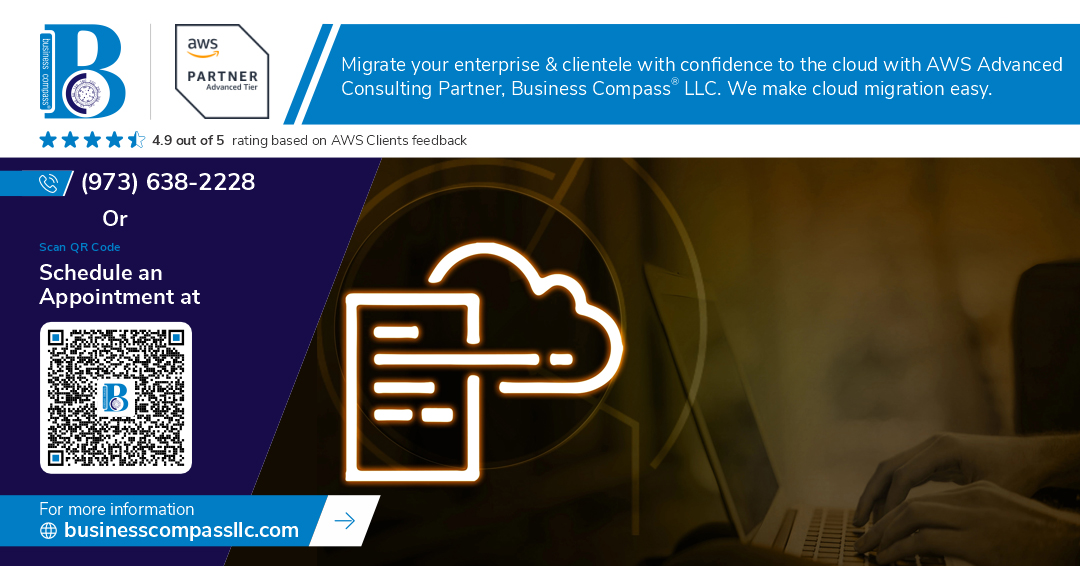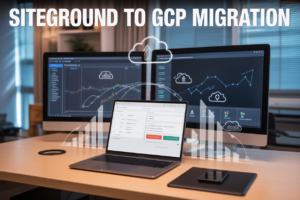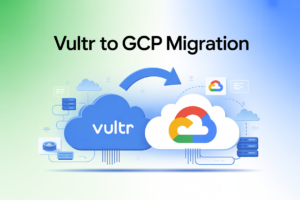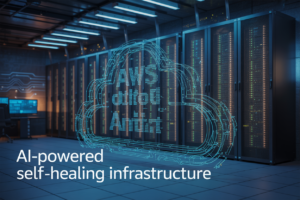Modern organizations face mounting pressure to deliver software faster while maintaining rock-solid security and controlling spiraling infrastructure costs. DevOps deployment practices offer a proven path to tackle these challenges head-on, transforming how teams build, test, and release applications.
This guide is designed for DevOps engineers, development teams, IT managers, and business leaders who want to leverage deployment automation benefits to drive real business outcomes. You’ll discover practical strategies that successful companies use to streamline their release processes and maximize their technology investments.
We’ll explore how performance optimization through DevOps deployment methods can dramatically reduce application response times and system downtime. You’ll also learn about strengthening security with DevOps deployment frameworks that bake protection into every stage of your pipeline. Finally, we’ll dive into cost reduction strategies in DevOps deployment operations that help you do more with less while improving overall system reliability.
Ready to transform your deployment game? Let’s jump into the specific practices that separate high-performing teams from the rest.
Essential DevOps Deployment Practices for Modern Organizations
Continuous Integration and Continuous Deployment Implementation
Modern DevOps teams build automated deployment pipelines that merge code changes multiple times daily, running tests automatically before releasing to production. This continuous deployment strategy eliminates manual bottlenecks, reduces human error, and enables rapid feature delivery. Teams can deploy updates within minutes instead of weeks, giving organizations competitive advantages through faster time-to-market and improved customer satisfaction.
Infrastructure as Code Adoption
Infrastructure as code transforms server management from manual processes into automated, version-controlled deployments. Teams define servers, networks, and cloud resources using code files that can be tested, reviewed, and deployed consistently across environments. This approach eliminates configuration drift, makes disaster recovery instant, and allows infrastructure changes to follow the same review processes as application code.
Automated Testing Integration
Smart testing automation runs security scans, performance checks, and functionality tests at every deployment stage without human intervention. Teams catch bugs before they reach users, maintain code quality standards, and deploy confidently knowing their applications work correctly. Automated tests run faster than manual testing, freeing developers to focus on building features instead of repetitive validation tasks.
Containerization and Orchestration Strategies
Containers package applications with all dependencies, ensuring consistent behavior across development, testing, and production environments. Orchestration platforms like Kubernetes automatically manage container deployment, scaling, and health monitoring. This combination eliminates “it works on my machine” problems, scales applications based on demand, and reduces infrastructure costs through efficient resource utilization and automated management.
Performance Optimization Through DevOps Deployment Methods
Automated Scaling and Load Balancing
Modern DevOps performance optimization relies on automated scaling systems that dynamically adjust resources based on traffic patterns and application demands. Auto-scaling groups monitor CPU usage, memory consumption, and request volumes to trigger horizontal or vertical scaling events without human intervention. Load balancers distribute incoming traffic across multiple servers, preventing bottlenecks and ensuring optimal response times. Container orchestration platforms like Kubernetes automatically manage workload distribution, spinning up new instances during peak usage and scaling down during low-demand periods. These automated deployment pipeline components reduce response times by up to 60% while maintaining consistent performance levels across varying traffic loads.
Performance Monitoring and Real-time Analytics
Continuous deployment strategies depend on comprehensive monitoring tools that track application performance metrics in real-time. Application Performance Monitoring (APM) solutions collect data on response times, error rates, throughput, and user experience metrics across the entire deployment stack. DevOps teams use dashboards to visualize performance trends, identify bottlenecks, and predict capacity requirements before issues impact end users. Real-time analytics enable proactive optimization decisions, allowing teams to adjust configurations, optimize database queries, and fine-tune caching strategies. Performance monitoring integration with CI/CD pipelines automatically triggers rollbacks when deployment quality gates fail, maintaining service reliability while accelerating delivery cycles.
Blue-Green and Canary Deployment Techniques
Blue-green deployments create identical production environments where traffic switches instantly between the current version (blue) and new release (green), enabling zero-downtime updates and immediate rollback capabilities. Canary deployments gradually route a small percentage of traffic to new application versions, monitoring performance metrics and user feedback before full rollout. These DevOps deployment practices reduce deployment risks by 85% compared to traditional methods. Infrastructure as code templates automate environment provisioning, ensuring consistency between blue-green environments. Canary analysis tools automatically compare performance baselines, error rates, and business metrics between old and new versions, making data-driven decisions about deployment progression or automatic rollback triggers.
Strengthening Security with DevOps Deployment Frameworks
Security-First Pipeline Design and DevSecOps Integration
DevSecOps integration transforms traditional deployment pipelines by embedding security checks at every stage of development. Security gates automatically block vulnerable code from reaching production, while threat modeling and security testing run parallel to development workflows. This approach shifts security left, catching vulnerabilities early when they’re cheaper to fix. Teams configure security policies as code, ensuring consistent enforcement across all environments and reducing manual oversight requirements.
Automated Vulnerability Scanning and Compliance Checks
Automated scanning tools continuously monitor codebases, dependencies, and infrastructure configurations for known vulnerabilities and compliance violations. Static Application Security Testing (SAST) analyzes source code during builds, while Dynamic Application Security Testing (DAST) evaluates running applications. Compliance frameworks like SOC 2, PCI DSS, and GDPR get automated validation through policy engines that generate audit reports and remediation recommendations, streamlining regulatory requirements.
Secrets Management and Access Control Implementation
Robust secrets management prevents credential exposure by centralizing sensitive data in encrypted vaults with role-based access controls. API keys, database passwords, and certificates rotate automatically without manual intervention, reducing human error risks. Zero-trust architectures enforce least-privilege principles, granting minimal necessary permissions to users and services. Multi-factor authentication and short-lived tokens add additional security layers while maintaining deployment velocity.
Container Security and Image Scanning Protocols
Container security starts with base image scanning that identifies vulnerabilities before deployment. Image signing and verification ensure only trusted containers run in production environments. Runtime security monitors container behavior for anomalous activities, while network policies isolate workloads and prevent lateral movement. Regular image updates and minimal base images reduce attack surfaces, while admission controllers enforce security policies at the Kubernetes cluster level.
Cost Reduction Strategies in DevOps Deployment Operations
Resource Optimization and Right-sizing Infrastructure
Smart resource optimization starts with understanding your actual usage patterns rather than guessing peak demands. Many organizations overprovision infrastructure by 40-60%, burning cash on idle resources. Modern DevOps deployment practices leverage automated scaling and real-time monitoring to match capacity with demand. Right-sizing means choosing the optimal instance types, storage configurations, and network bandwidth based on workload requirements. Infrastructure as code tools enable precise resource allocation, while containerization reduces overhead compared to traditional virtual machines. Regular auditing reveals unused resources, redundant services, and opportunities for consolidation that directly impact your bottom line.
Automated Provisioning and De-provisioning
Automation eliminates the human error and delays that drain budgets in traditional deployment operations. Automated provisioning creates resources exactly when needed, while de-provisioning tears them down the moment they’re no longer required. This approach prevents the common scenario where development environments run 24/7 despite being used only during business hours. Scripts and templates ensure consistent, repeatable deployments across environments, reducing troubleshooting time and operational overhead. Automated deployment pipelines integrate seamlessly with cloud APIs to spin up testing environments, run deployments, and clean up afterwards. The result is faster delivery cycles with significantly lower infrastructure costs.
Cloud Cost Management and Monitoring Tools
Effective DevOps cost reduction relies on comprehensive visibility into cloud spending patterns and resource utilization. Native cloud monitoring tools like AWS CloudWatch, Azure Cost Management, and Google Cloud Billing provide detailed breakdowns of expenses by service, project, and team. Third-party platforms such as CloudHealth, Spot.io, and Densify offer advanced analytics and automated recommendations for cost optimization. These tools identify unused elastic IP addresses, unattached storage volumes, and oversized instances that quietly inflate bills. Setting up alerts for budget thresholds prevents surprise charges, while tagging strategies enable accurate cost allocation across departments and projects.
Efficient CI/CD Pipeline Resource Allocation
Optimizing continuous deployment strategies requires careful attention to pipeline resource consumption and scheduling. Build agents, test environments, and deployment slots consume compute resources that accumulate significant costs over time. Containerized build environments reduce startup time and resource overhead compared to traditional virtual machines. Parallel execution strategies balance speed with resource costs, while scheduled builds during off-peak hours take advantage of lower cloud pricing tiers. Caching build artifacts and dependencies eliminates redundant downloads and compilation steps. Smart pipeline design includes resource cleanup steps, automatic artifact expiration, and shared resource pools that maximize utilization across multiple projects and teams.
Measuring Success and ROI of DevOps Deployment Practices
Key Performance Indicators for Deployment Efficiency
Track deployment frequency, lead time, and mean time to recovery to gauge your DevOps deployment practices effectiveness. Monitor change failure rates and successful deployment percentages to identify bottlenecks in your automated deployment pipeline. These metrics reveal how continuous deployment strategies impact overall system reliability and team productivity, helping you optimize deployment automation benefits.
Security Metrics and Compliance Tracking
Security vulnerabilities detected per deployment cycle and remediation times serve as critical indicators for DevOps security frameworks. Measure compliance audit pass rates, security scanning coverage, and the number of security incidents post-deployment. Track automated security test execution rates within your deployment pipeline to ensure infrastructure as code maintains security standards while accelerating delivery cycles.
Cost Savings Analysis and Budget Optimization
Calculate infrastructure costs before and after implementing DevOps deployment practices to demonstrate clear DevOps ROI measurement. Track resource utilization efficiency, reduced manual intervention hours, and downtime-related losses prevented through automation. Compare cloud resource spending patterns and analyze how DevOps performance optimization reduces operational expenses, providing concrete data for DevOps cost reduction initiatives and budget planning decisions.
Smart DevOps deployment practices deliver real wins across three critical areas that matter most to your business. When you automate your deployment pipelines, implement continuous integration and delivery, and adopt infrastructure as code, you’ll see faster releases, stronger security, and lower operational costs. These aren’t just technical improvements – they translate directly into competitive advantages and bottom-line results.
The path forward is clear: start measuring your current deployment metrics, identify your biggest pain points, and implement these practices one step at a time. Don’t try to transform everything overnight. Pick one area where you can make the biggest impact first, whether that’s speeding up your release cycles or tightening your security posture. Your development teams, your customers, and your budget will thank you for making the investment in modern DevOps deployment practices.



















